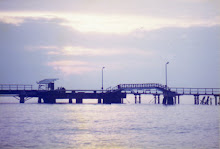Autonomous Rice Transplanter Uses GPS System
Rice is the staple food of Japan and the nation's most important crop, and it is planted all across the country at the beginning of summer. Unlike in the past, this is rarely done by hand these days, with rice transplanters that are ridden by people in broad use. But the environment surrounding Japanese rice production is changing as the number of people working in agriculture declines. In order to adapt to this new reality, scientists and engineers are working closely to develop rice planters that can function with minimal operation by human.

©National Agricultural Research Center
How It Works
The autonomous rice transplanter developed by the National Agricultural Research Center works, and it uses the Global Positioning System (GPS) in combination with an onboard position sensor. To be able to plant rice without a human operator onboard, the machine has to recognize the location and shape of the field. GPS is used for this, with the operator entering data for the four corners of the paddy into the machine's computer prior to planting.
However, the GPS signal sent from satellites to receivers mounted on automobiles and the like on the Earth's surface has generally a margin of error of about 10 meters due to such factors as moisture in the air. For this reason, the autonomous rice transplanter also uses a mobile phone to receive extremely precise electronic base-point data provided by the Geographical Survey Institute; this data has a margin of error of only 2 cm. The operator then decides on a route for the machine to take based on the coordinates of the four corners of the rice field and inputs that data into the computer. After the program is set, the autonomous rice transplanter is activated by remote control, and the machine moves into the rice field on its own and begins planting.

©National Agricultural Research Center
Multiple Innovations
Because a rice field has undulations, the machine at times will tilt to the left or right or to the front or back as accordingly, giving rise to the possibility that it may stray from its programmed route. In order to compensate for this, the computer applies data from the onboard position sensor to recalculate how far off it is from the set route. The computer then recalibrates and controls the drive wheels to minimize drift. Drift from the set route can be kept to less than 10 cm. The machine slows down and stops planting automatically as getting close to the edge of the rice field. It then makes a U-turn, carefully avoiding the seedlings it has just planted, and sets out on a new path.
Another remarkable innovation is the method how the machine actually plants seedlings. Previous models took several 30 cm by 60 cm nursery boxes containing rice seedlings and planted them in rows in the soil. This meant, however, that the machines would often need to be replenished when they reached the edge of the rice field. With the new type, rather than using nursery boxes, the autonomous rice transplanter uses "long-mat seedlings," which have been cultivated on a 6-meter-long mat made of unwoven cloth. Loaded with a wound bundle of six such mats, the autonomous rice transplanter can plant seedlings over an area of 300 square meters without being replenished.In addition to the autonomous rice transplanter, the National Agricultural Research Center is developing an unmanned combine and a field-surveying robot, with the ultimate aim of automating all aspects of work in rice fields in the future. (Web-Japan,October 2008)





No comments:
Post a Comment